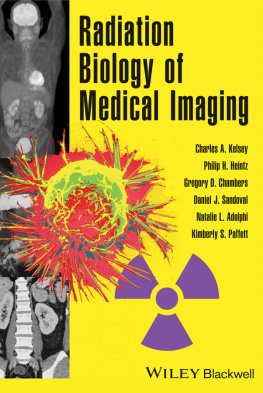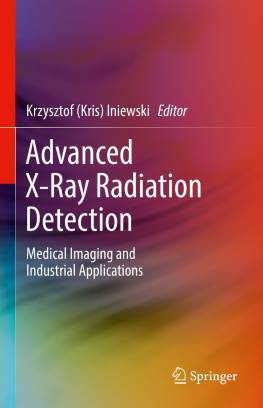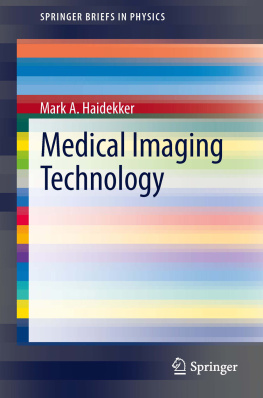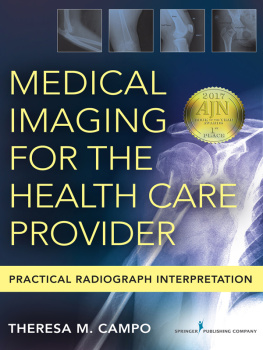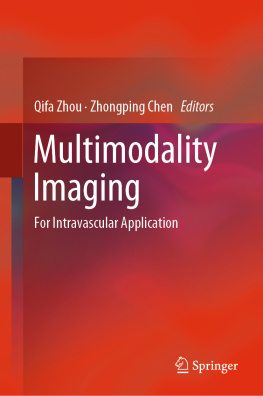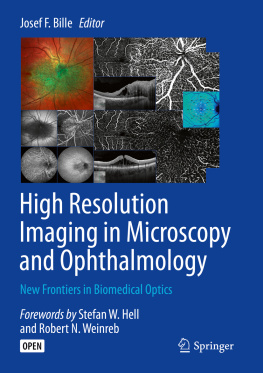Kelsey Charles A. - Radiation Biology of Medical Imaging
Here you can read online Kelsey Charles A. - Radiation Biology of Medical Imaging full text of the book (entire story) in english for free. Download pdf and epub, get meaning, cover and reviews about this ebook. year: 2013, publisher: John Wiley & Sons, Incorporated, genre: Home and family. Description of the work, (preface) as well as reviews are available. Best literature library LitArk.com created for fans of good reading and offers a wide selection of genres:
Romance novel
Science fiction
Adventure
Detective
Science
History
Home and family
Prose
Art
Politics
Computer
Non-fiction
Religion
Business
Children
Humor
Choose a favorite category and find really read worthwhile books. Enjoy immersion in the world of imagination, feel the emotions of the characters or learn something new for yourself, make an fascinating discovery.
- Book:Radiation Biology of Medical Imaging
- Author:
- Publisher:John Wiley & Sons, Incorporated
- Genre:
- Year:2013
- Rating:4 / 5
- Favourites:Add to favourites
- Your mark:
- 80
- 1
- 2
- 3
- 4
- 5
Radiation Biology of Medical Imaging: summary, description and annotation
We offer to read an annotation, description, summary or preface (depends on what the author of the book "Radiation Biology of Medical Imaging" wrote himself). If you haven't found the necessary information about the book — write in the comments, we will try to find it.
Radiation Biology of Medical Imaging — read online for free the complete book (whole text) full work
Below is the text of the book, divided by pages. System saving the place of the last page read, allows you to conveniently read the book "Radiation Biology of Medical Imaging" online for free, without having to search again every time where you left off. Put a bookmark, and you can go to the page where you finished reading at any time.
Font size:
Interval:
Bookmark:

Table of Contents

Copyright 2014 by John Wiley & Sons, Inc. All rights reserved.
Published by John Wiley & Sons, Inc., Hoboken, New Jersey.
Published simultaneously in Canada.
No part of this publication may be reproduced, stored in a retrieval system, or transmitted in any form or by any means, electronic, mechanical, photocopying, recording, scanning, or otherwise, except as permitted under Section 107 or 108 of the 1976 United States Copyright Act, without either the prior written permission of the Publisher, or authorization through payment of the appropriate per-copy fee to the Copyright Clearance Center, Inc., 222 Rosewood Drive, Danvers, MA 01923, (978) 750-8400, fax (978) 750-4470, or on the web at www.copyright.com. Requests to the Publisher for permission should be addressed to the Permissions Department, John Wiley & Sons, Inc., 111 River Street, Hoboken, NJ 07030, (201) 748-6011, fax (201) 748-6008, or online at http://www.wiley.com/go/permissions.
Limit of Liability/Disclaimer of Warranty: While the publisher and author have used their best efforts in preparing this book, they make no representations or warranties with respect to the accuracy or completeness of the contents of this book and specifically disclaim any implied warranties of merchantability or fitness for a particular purpose. No warranty may be created or extended by sales representatives or written sales materials. The advice and strategies contained herein may not be suitable for your situation. You should consult with a professional where appropriate. Neither the publisher nor author shall be liable for any loss of profit or any other commercial damages, including but not limited to special, incidental, consequential, or other damages.
For general information on our other products and services or for technical support, please contact our Customer Care Department within the United States at (800) 762-2974, outside the United States at (317) 572-3993 or fax (317) 572-4002.
Wiley also publishes its books in a variety of electronic formats. Some content that appears in print may not be available in electronic formats. For more information about Wiley products, visit our web site at www.wiley.com.
Library of Congress Cataloging-in-Publication Data:
Kelsey, Charles A., author.
Radiation Biology of Medical Imaging / Charles A. Kelsey, Philip H. Heintz, Daniel J. Sandoval, Gregory D. Chambers, Natalie L. Adolphi, Kimberly S. Paffett
p. ; cm
Includes bibliographical references.
ISBN 978-0-470-55177-6 (cloth)
I. Heintz, Philip, author. II. Sandoval, Daniel, author. III. Chambers, Gregory D. (Gregory Daniel), author. IV. Adolphi, Natalie, author. V. Paffett, Kimberly, author. VI. Title
[DNLM: 1. Radiobiology. 2. Diagnostic Imaging. 3. Tissuesradiation effects. WN 600]
QP82.2.R3
612'.01448dc23
2013012759
Acknowledgments
The authors want to acknowledge and thank the many individuals who contributed their thoughts and views regarding the impact of radiation biology in the practice of medicine. While the authors are fully responsible for the content of this book, we thank these individuals for their generous time and effort in reducing the number and egregiousness of the errors and in suggesting better ways in which to explain things.
In particular, we would like to thank Bret Heintz, PhD, and Phillip Berry, PhD, for their careful review of several chapters, and Ruth Anne Bump, Tanner Adams, and Sage Byrne for their efforts in tirelessly working their way through the seemingly endless revision of the illustrations. And also, we thank the numerous students who struggled through the earlier versions of the course. Their challenging questions and perceptive views have immeasurably improved this text.
The authors would like to thank our spouses and families for their seemingly everlasting support in this project, specifically, Judy Kelsey, Lillian Heintz, Kristen Sandoval, Jennifer Chambers, Andrew McDowell, and Michael Paffett.
Introduction
This book evolved from courses taught over the past several years to medical professionals, technologists, scientists, and engineers at the University of New Mexico. The medical professionals in our classes were primarily radiology and cardiology residents and fellows. Our students included X-ray, nuclear medicine, radiation oncology, and ultrasound technology students. The residents, fellows, and students were studying for board certification or registry examinations to establish their competence to practice their professions. We needed a book for these users of radiation with questions of the type they would face in their examinations. The authors consist of a team of scientists and engineers with over 75 years combined experience working with and teaching about radiation. We have included a chapter on radiation therapy because it is also deeply involved in imaging. The biological effects of magnetic resonance and ultrasound are included, although they employ nonionizing radiation because their biological effects may be cause for concern at higher power levels.
Within a year of Roentgen's discovery of X-rays in 1895, their biological effects were evident because radiation burns and ulcers were observed in early users. Clarence Daly, one of Edison's assistants, died from radiation-induced cancer less than 10 years after their discovery. In the years between X-ray's discovery and Watson and Crick's unraveling of the DNA structure in 1953, radiobiology studies concentrated on radiation in the treatment of cancer and on the effects of radiation on those exposed to radiation during World War II. Since 1953, radiobiology studies have focused on radiation damage to the DNA molecule. For a number of years before 9/11, there was a lull in the study of radiation effects. Since 9/11, there has been an increased effort to understand the effect of low levels of ionizing radiation. With recent developments in the study of DNA, now is an exciting time for the field of radiation biology.
Medical radiation, which is responsible for about half the U.S. population exposure, comes primarily from three sources: radiation therapy, interventional/diagnostic, and nuclear medicine. Radiation therapy, often called radiation oncology, uses high doses to cure cancer. Interventional/diagnostic uses lower doses to guide the insertion of devices into the body or determine what ails the patient. Nuclear medicine follows radioactive materials injected into the body to determine body functions. The effects of medical radiation depend on the dose and the parts of the body irradiated, but do not depend on how or why the radiation was delivered.
The first quarter of the book is designed to establish an essential background knowledge base in biology and physics. For many readers, this will be a straightforward review. The book next covers DNA structure and function, DNA damage and repair, genetic effects, and the characteristics of cancer. The third quarter of the book covers the effects of radiation on various body organs and on the whole body, including a brief discussion of radiation-induced bystander effects. The final quarter concentrates on radiation effects from medical and natural sources of radiation and the regulations designed to protect workers and the general public. Particular attention is directed to the effects of low-dose, long-term exposures and the limitations of the linear no-threshold (LNT) hypothesis. A brief discussion of hormesis is included in this section.
Next pageFont size:
Interval:
Bookmark:
Similar books «Radiation Biology of Medical Imaging»
Look at similar books to Radiation Biology of Medical Imaging. We have selected literature similar in name and meaning in the hope of providing readers with more options to find new, interesting, not yet read works.
Discussion, reviews of the book Radiation Biology of Medical Imaging and just readers' own opinions. Leave your comments, write what you think about the work, its meaning or the main characters. Specify what exactly you liked and what you didn't like, and why you think so.

